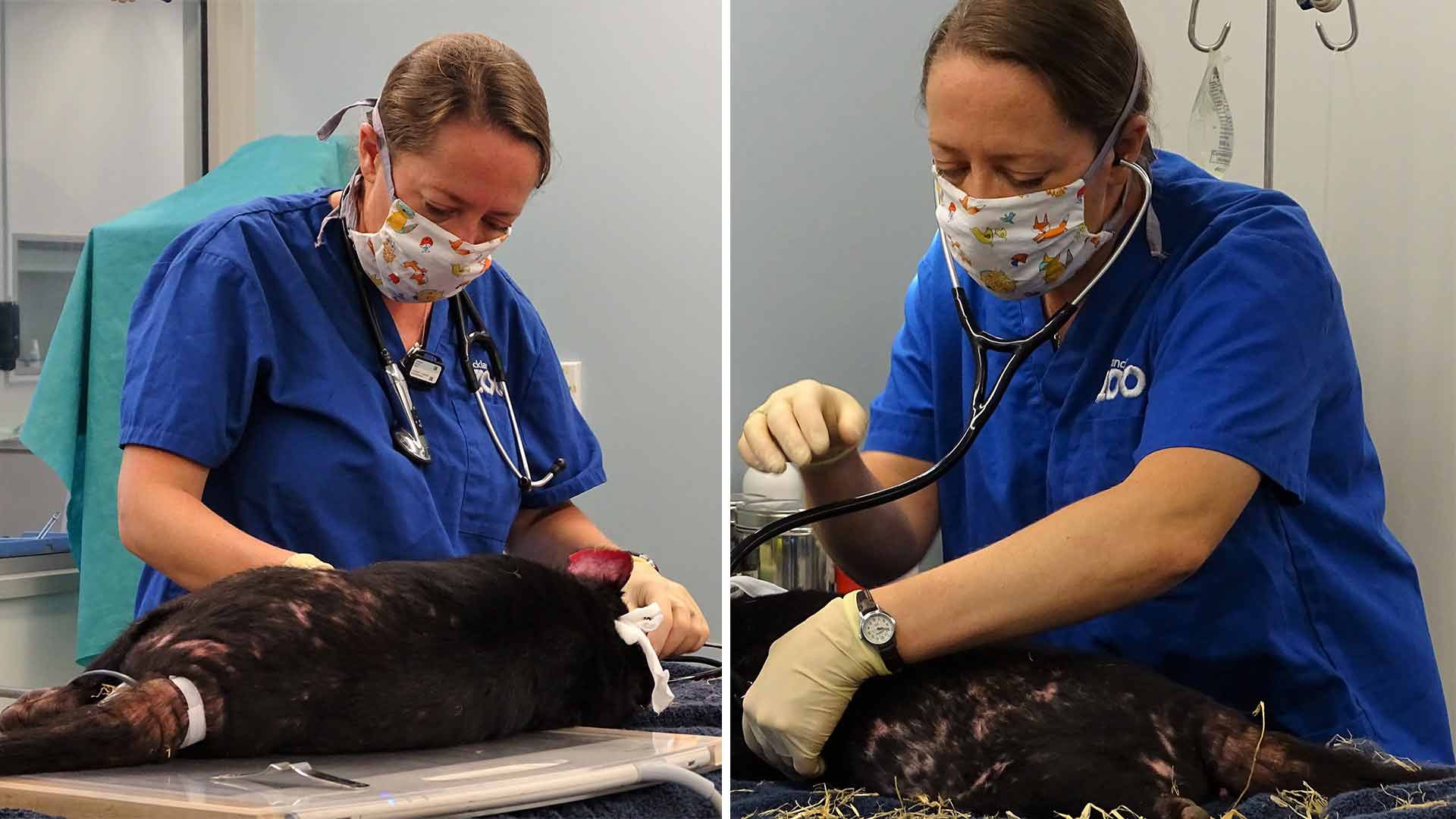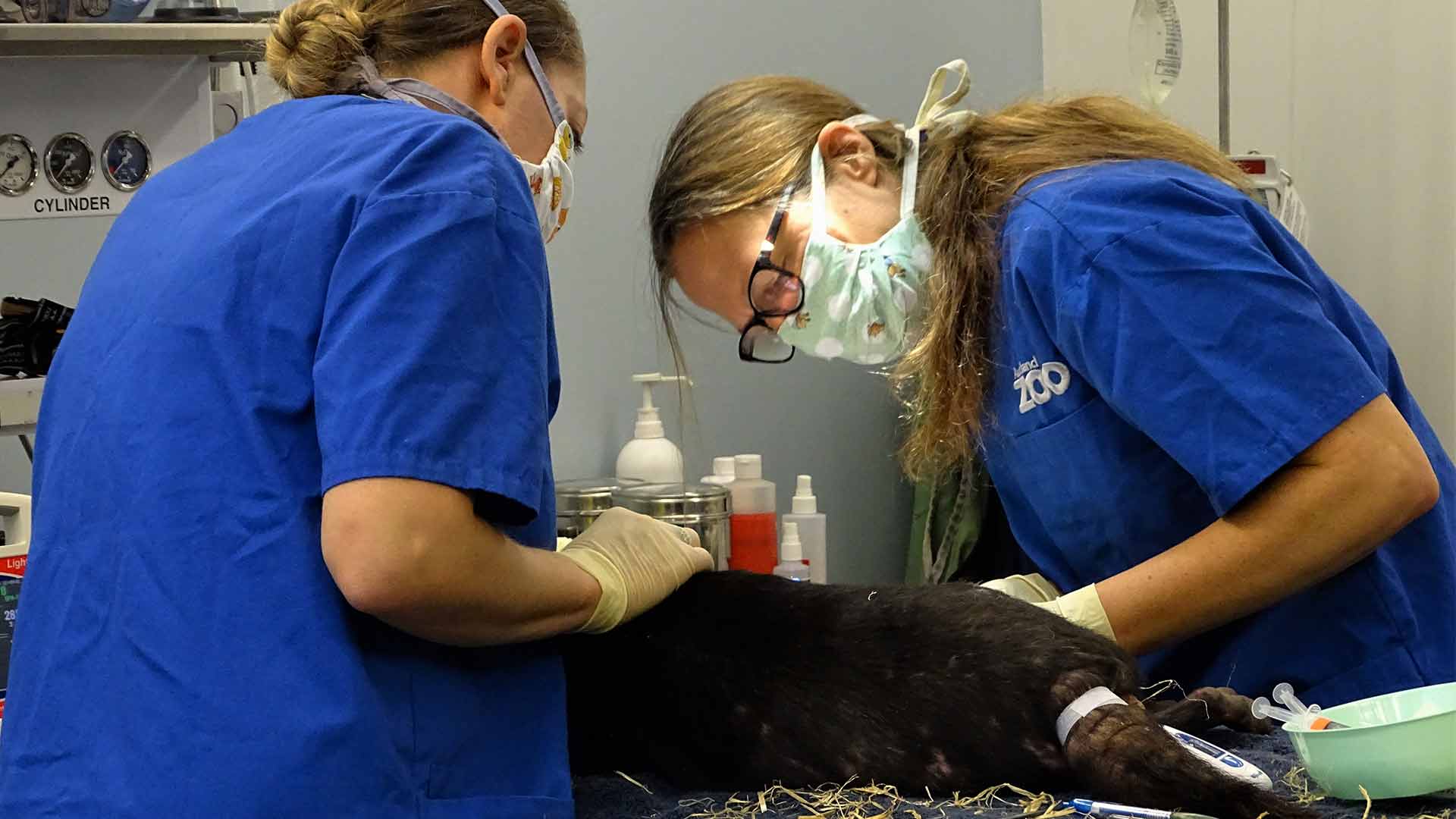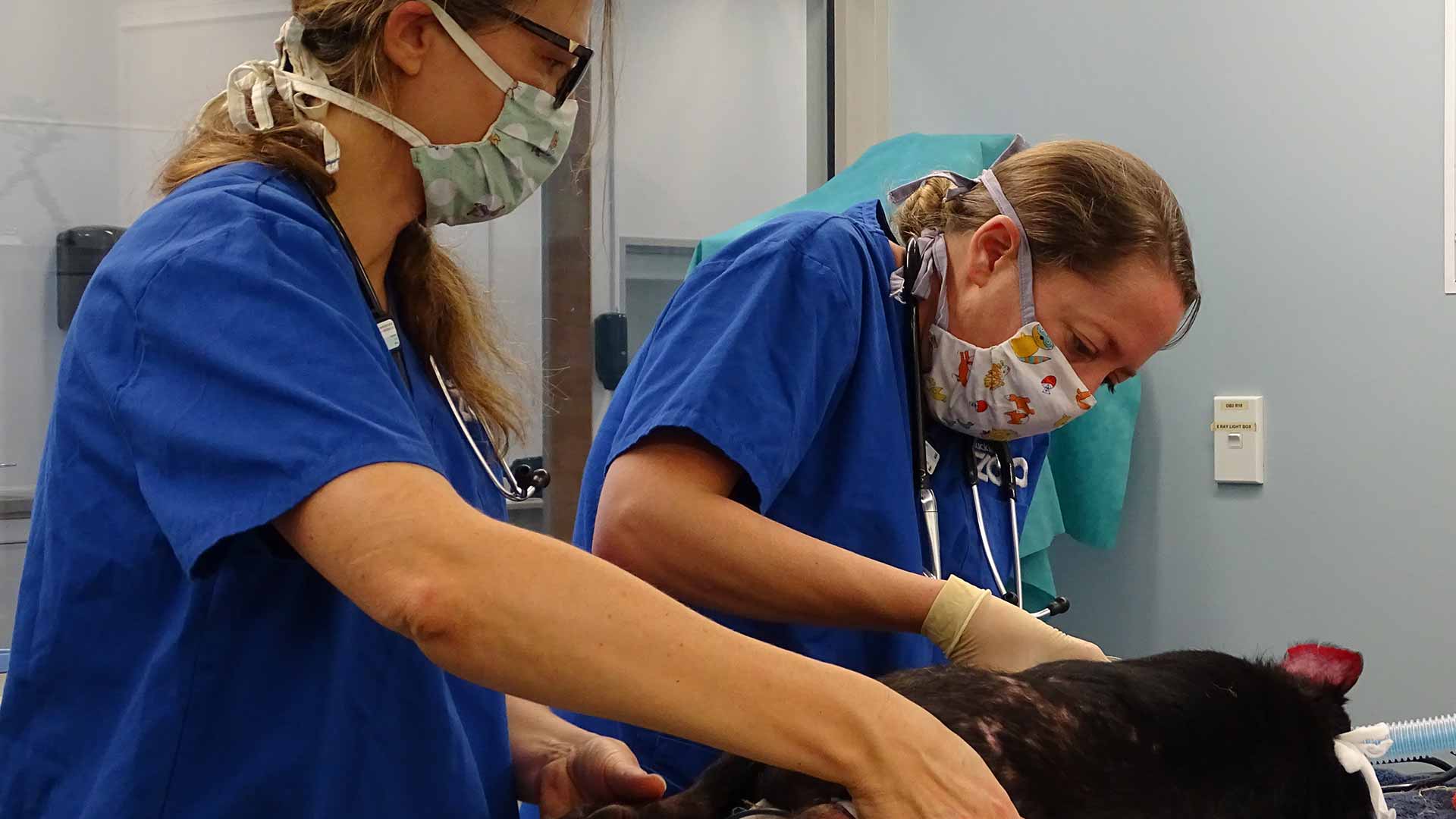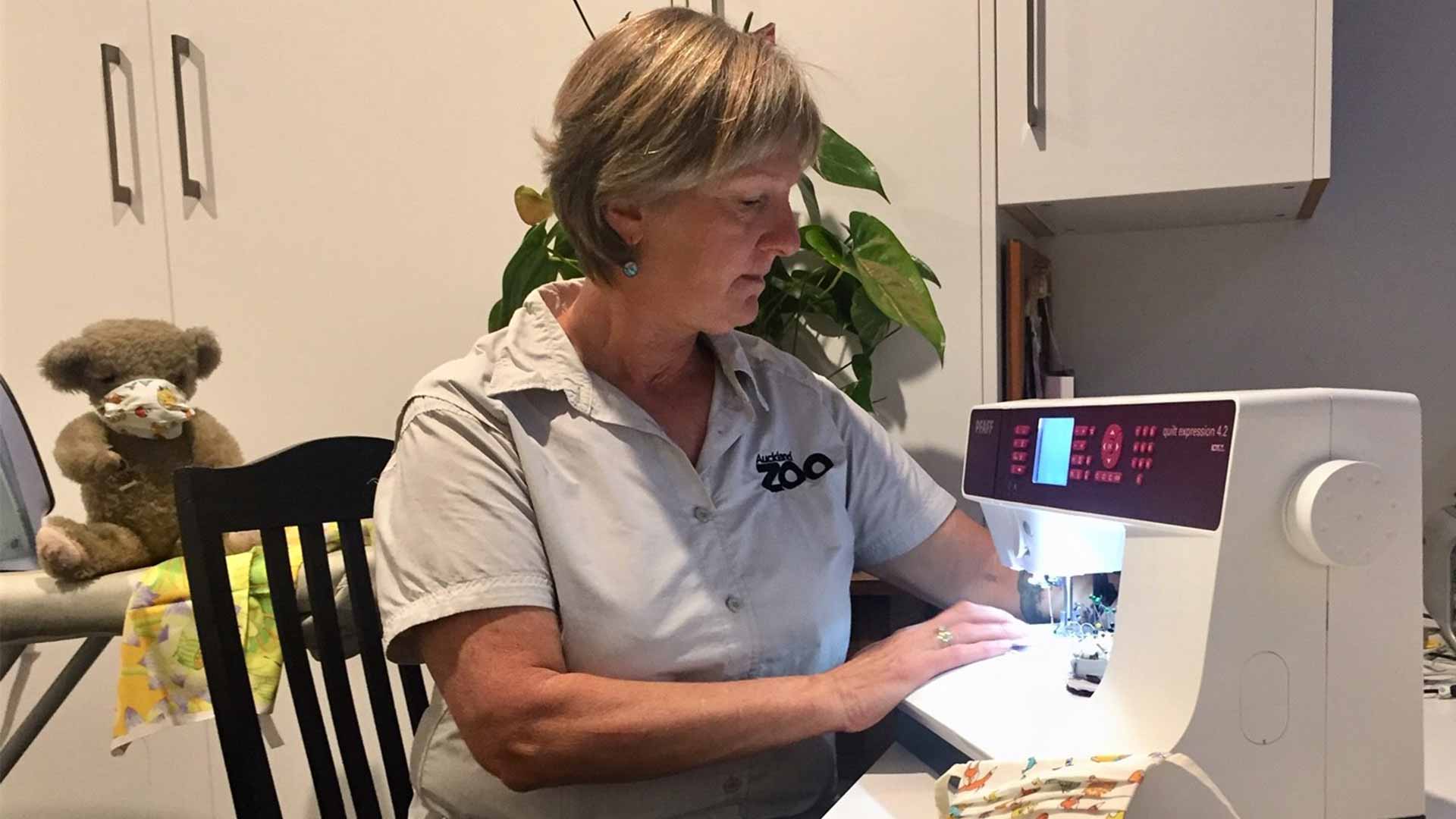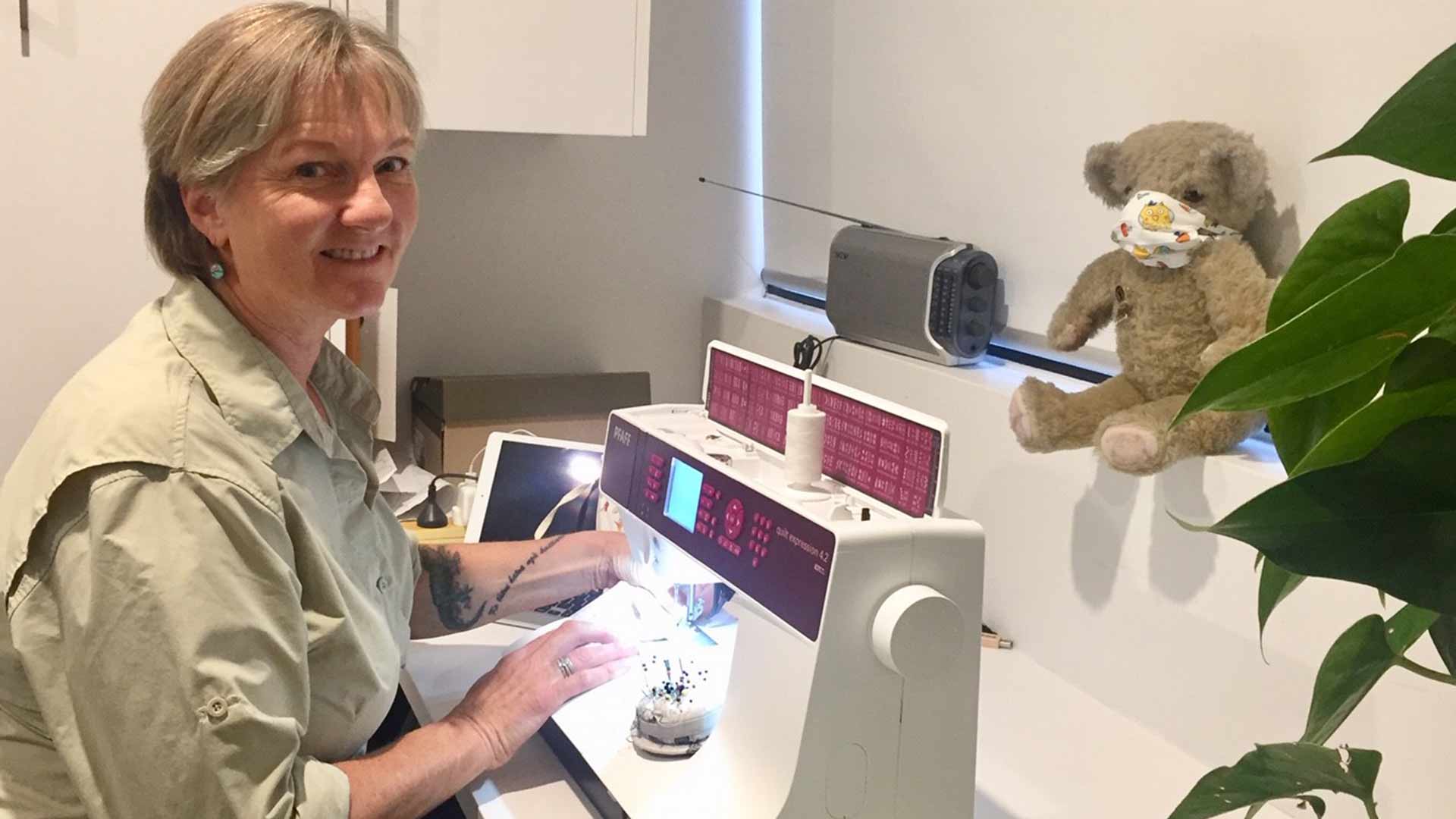Making the perfect mask
The two sewing queens have now made over 100 masks. Many are now in use, with tiger, cheetah, elephant and other kids’ animal themed prints, including Peter Rabbit, proving popular. Now, with the help of another keen Zoo volunteer and sewer, Glenda Ray from West Auckland, they are in the process of making another 70.
The masks are made of two layers of 100% lightweight cotton, like a mini pillowcase allowing for an extra filter to be inserted in between.
“After use, they are hot soap-washed, dried, then put through an auto-clave machine for sterilisation at 134 degrees Celsius – a rigorous process to not just kill possible corona virus but any infectious agent – and to which they are holding up well. This requires a great logistical daily effort from our veterinary nurses who have now established a system to process them as efficiently as possible,” explains An.
Both Diana and Beth, experienced sewers, say while the masks look simple, they are actually very fiddly to make with their little plies needed to make them fit well onto one’s face which is essential to be effective, and the need to create the masks’ ties out of cotton as well due to elastic not being able to withstand the sterilisation process.
For Beth, also a keen quilter who has sewn all her life, their being fiddly has been a good challenge. The ex-nurse and Auckland Zoo volunteer guide, who is missing the Zoo animals and her people focused role, says the mask project came as a welcome focus under lockdown.
“I’m really loving it. I wake up early, about 5.30am, make myself a cup of tea and I’m sewing by 6am. It’s lovely and it’s nice to be helping. I’ve also enjoyed being able to get out of a bit of cooking while doing it as well!
In true community spirit, Beth spread the word about the need for more fabric while none could be purchased, and along with friends, she had a kind cousin in Wellington sending her up fabrics, as well as raiding her own linen cupboard to find a new king-sized sheet she promptly washed and cut up so it could be used as lining for the masks. Her latest fabric stash from her Wellington cousin appropriately features frogs, butterflies, insects and plants.
Vet An and her colleagues are full of praise for the way the volunteers have come to the rescue so quickly and overcome all the logistics of getting the materials to get the job done.
“Diana and Beth have done an amazing job, and we’re so grateful to them. The masks are very well made, and they are tweaking them as we go to make them as comfortable as possible. Having to wear a mask most of the day while working is not really pleasant so developing a mask that does the job but also fits well is really important. Along with still using commercial masks for the likes of open surgeries and necropsies, we now have a great supply of cloth masks that we can use and re-use for many animal checks and simple procedures, as well as for our primate and carnivore keepers who will most likely need to be using these masks for some time to come,” says An.


